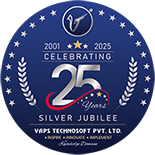The world of education is evolving faster than ever before. Traditional teaching methods, once seen as effective, are no longer enough to prepare students for the real-world challenges they will face after graduation. Today, industries demand a workforce that is not only knowledgeable but also skilled, adaptable, and ready to contribute from day one. Outcome-Based Education (OBE) offers a solution to this pressing need by shifting the focus from what is taught to what is actually learned. In OBE, the goal is to equip students with specific, measurable skills that directly translate into job performance. It is a learner-centered approach that ensures graduates are capable of meeting the dynamic needs of modern industries. In this blog, we will explore the principles of Outcome-Based Education, how it aligns the curriculum with industry demands, and why institutions should adopt it to stay competitive.
What Is Outcome-Based Education?
Outcome-Based Education is an educational model that starts with clear outcomes in mind. These outcomes define what students are expected to know and be able to do by the end of a course or program. Unlike traditional education that often emphasizes the process of teaching, OBE concentrates on the results of learning. Teachers design their lessons, activities, and assessments around helping students achieve these defined outcomes. This ensures that every aspect of the education process is purposeful and directed towards tangible goals. OBE does not prescribe a single method of teaching but allows flexibility, recognizing that different students learn differently. What matters most is that every student achieves the intended learning outcomes, regardless of how they get there.
Why Is Outcome-Based Education Important?
1. Closing the Gap Between Education and Employment
One of the biggest criticisms of traditional education systems is that they fail to prepare students for the workforce. Employers often find that graduates lack practical skills, critical thinking abilities, and hands-on experience. Outcome-Based Education addresses this problem by designing the curriculum around industry needs. It ensures that students are not just absorbing information but are able to apply it effectively in real-world situations. This makes graduates more employable and better equipped to start contributing to their workplaces immediately.
2. Building Accountability and Transparency
With OBE, the goals are clearly defined from the outset. Students know what they are expected to learn, and educators know what they are expected to deliver. This creates a transparent educational environment where success can be measured objectively. Institutions become more accountable for their educational outcomes, and students are more aware of their progress and areas that need improvement. It leads to a more focused and efficient learning experience.
3. Catering to Individual Learning Styles
Every student learns differently. Some grasp concepts quickly, while others need more time or different approaches. OBE accommodates these differences by focusing on the achievement of outcomes rather than the methods used. Students can achieve success through different pathways, making education more inclusive and personalized. It allows educators to tailor their teaching strategies to meet the unique needs of each student, resulting in a deeper and more meaningful learning experience.
Key Components of Outcome-Based Education
Implementing OBE successfully requires a few essential elements. Clear learning outcomes must be the foundation of any program. These outcomes should be specific, measurable, and aligned with industry requirements. Curriculum mapping is also crucial, linking each course objective to the desired outcomes. Assessments should be continuous rather than relying solely on final exams, allowing for regular feedback and opportunities for improvement. Lastly, a strong feedback loop between students and educators is necessary to keep the learning process dynamic and responsive. This structure ensures that the entire education system works cohesively towards the end goals.
Aligning Curriculum with Industry Demands
Industries are changing at a pace never seen before, driven by technological advancements, globalization, and shifting market needs. Educational institutions must keep up if they want their students to succeed. Aligning the curriculum with industry demands is no longer optional; it is a necessity. Institutions need to establish strong partnerships with industries, understand the skills and competencies required, and integrate them into their programs. This can be done by consulting with industry experts, offering internships, incorporating the latest technologies into the classroom, and constantly updating course content to reflect current trends. Real-world projects should be a part of the curriculum, allowing students to apply what they learn in a practical setting. This hands-on experience not only reinforces learning but also gives students a taste of what working life will be like.
Focusing on skills over pure theory is another important aspect. While theoretical knowledge provides a foundation, practical skills are what employers truly value. Institutions must ensure that students graduate with the ability to perform tasks, solve problems, and innovate within their chosen fields. This approach results in graduates who are confident, capable, and ready to meet the challenges of the modern workforce.
Benefits of Aligning Curriculum with Industry Demands
When institutions align their curriculum with industry needs, the benefits are substantial. Students enjoy higher employability rates, as they possess the skills employers are actively seeking. They are better prepared to hit the ground running, reducing the training costs for companies and making themselves more attractive hires. This also reflects positively on the institutions themselves, enhancing their reputation and attracting more students. Employers prefer to recruit from schools that have a proven track record of producing competent, industry-ready graduates. Student satisfaction also increases, as learners see a direct path from their education to meaningful employment. They feel more confident in their abilities and are more motivated to succeed.
Challenges in Implementing Outcome-Based Education
Despite its many advantages, adopting Outcome-Based Education is not without challenges. Faculty members may require significant training to shift their mindset from traditional methods to an outcome-focused approach. This transition demands time, effort, and resources. Institutions must also invest in technology and systems that support OBE, such as Learning Management Systems and assessment platforms. Resistance to change is another barrier. Students and teachers alike may initially be uncomfortable with the new methods, preferring the familiarity of conventional education. Overcoming these challenges requires strong leadership, a clear vision, and a commitment to continuous improvement.
How Technology Supports Outcome-Based Education
Technology plays a critical role in the successful implementation of OBE. Digital platforms make it easier to track learning outcomes, manage assessments, and gather feedback. Vaps ERP offers a comprehensive solution for digitising and automatising the Outcome-Based Education process. It helps educators map curriculum objectives, monitor student performance against outcomes, and generate detailed reports that are useful for internal improvements and accreditation processes. Institutions using Vaps ERP can stay agile, respond quickly to industry changes, and ensure their curriculum remains aligned with current demands. By adopting digital tools like Vaps ERP, schools can simplify the complex task of managing OBE and focus more on delivering high-quality education.
How to Successfully Implement Outcome-Based Education
To successfully implement OBE, institutions should start by clearly defining their desired learning outcomes. These outcomes must be based on thorough research into industry needs and future employment trends. Once the outcomes are set, the curriculum must be mapped carefully, ensuring that every course and activity contributes to achieving these goals. Faculty development is essential. Teachers should be trained not just in OBE theory, but also in practical strategies for designing lessons, activities, and assessments that are outcome-focused. Engaging industry experts in curriculum development, guest lectures, and assessment activities ensures that the content remains relevant and current. Continuous monitoring of student performance, supported by technology like Vaps ERP, is necessary to track progress and make adjustments as needed. Finally, collecting feedback from all stakeholders, including students, faculty, and employers, helps in refining the process and ensuring ongoing improvement.
The Future of Education: Why Outcome-Based Learning Will Lead the Way
Outcome-Based Education is not a passing trend; it represents the future of learning. As industries continue to change, education must become more adaptive, skills-oriented, and focused on measurable results. Institutions that adopt OBE will be better positioned to produce graduates who are ready to meet the challenges of tomorrow’s job market. Digitalization and automation, driven by tools like Vaps ERP, will play a major role in making this transition smooth and effective. By embracing OBE today, educational institutions can ensure that they remain relevant, competitive, and capable of fulfilling their primary mission: preparing students for success in life and work.
Step Into the Future with Outcome-Based Education
Outcome-Based Education provides a clear path towards a more meaningful and impactful learning experience. It helps institutions bridge the gap between education and employment, making students industry-ready and capable of thriving in the real world. Aligning curriculum with industry demands ensures that education stays relevant and that graduates possess the skills employers value most. With the support of smart platforms like Vaps ERP, institutions can simplify the process of implementing OBE, making it easier to focus on what really matters: student success. Now is the time to embrace Outcome-Based Education and build a stronger, brighter future for the next generation.












